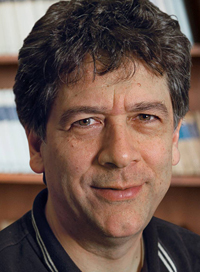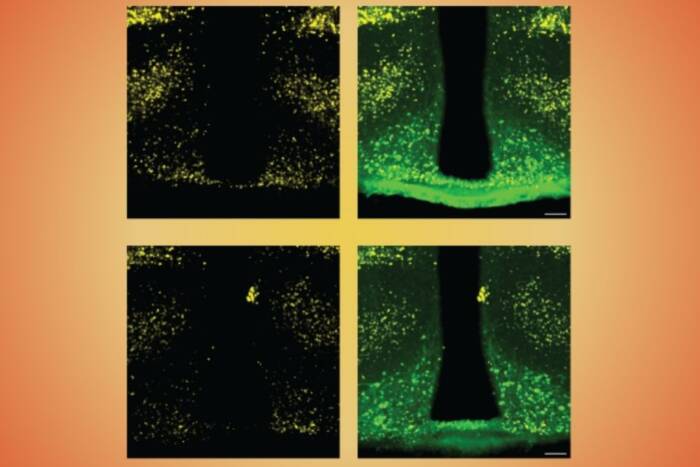Novel method for trapping HIV inside its host may give rise to new antivirals
After the HIV virus infects a cell and replicates, its offspring employ an ingenious escape plan. Cloaking its vulnerable viral particles in the host’s own membrane, the virus rolls into a protective bud that pops off the cell—hijacking the machinery that its host would normally use to pinch off a new daughter cell after division. Ebola, parainfluenza, and many enveloped viruses use the same exit strategy.
Now a new study identifies a genetic mutation—one that occurs naturally in some mice and monkeys—which prevents enveloped viruses from budding off their hosts. The findings, published in Cell, may give rise to new antivirals that prevent human disease without damaging the rest of the body.
Enveloped viruses escape the cell by commandeering ESCRT, a family of protein complexes that remodel cell membranes to facilitate cell division, among other crucial functions. The mutated gene observed in monkeys and mice, known as retroCHMP3, happens to produce a modified protein that slightly delays one step of the ESCRT pathway. The delay is not very long: Healthy cells with this mutation appear to work around it, suffering no ill effects. But a minor glitch is all it takes to disrupt the virus’s carefully-timed exit strategy, trapping the perpetrator inside the cell.
“The assembly of individual virions of HIV-1 has a precise choreography, and we’ve found that retroCHMP3 can slightly delay that process,” says Rockefeller’s Sanford M. Simon, who co-led the study with Kate Bredbenner, also of Rockefeller, and Nels Elde and Wesley Sundquist at University of Utah. “This is not of particular consequence for most of its activities in the cell. However, it is deleterious for the assembly of retroviruses.”
Simon offers a relatable example. “If I hit minor traffic or construction during a road trip, I will still make it to my destination fairly close to my expected time of arrival. If, however, I take a specific shuttle bus to the airport to catch a specific flight, and that flight connected to another flight, even a minor delay along the way could prevent me from getting to my destination altogether.”
While the cell has time on its side, an invading virus does not. Even a few seconds’ delay due to an altered protein could prevent the virus from going on to infect the rest of the body.
After observing this phenomenon in monkey and mouse cells, the researchers expressed the genetic mutation in human cells in the lab and found that it prevented the spread of HIV without harming the normal metabolic processes of the host cells. This encouraging result may eventually lead to new treatments for deadly viruses. “An intervention that slows down the process may be inconsequential for the host, but provide us with a new anti-retroviral,” says Simon, the Günter Blobel professor and head of the laboratory of cellular biophysics.



